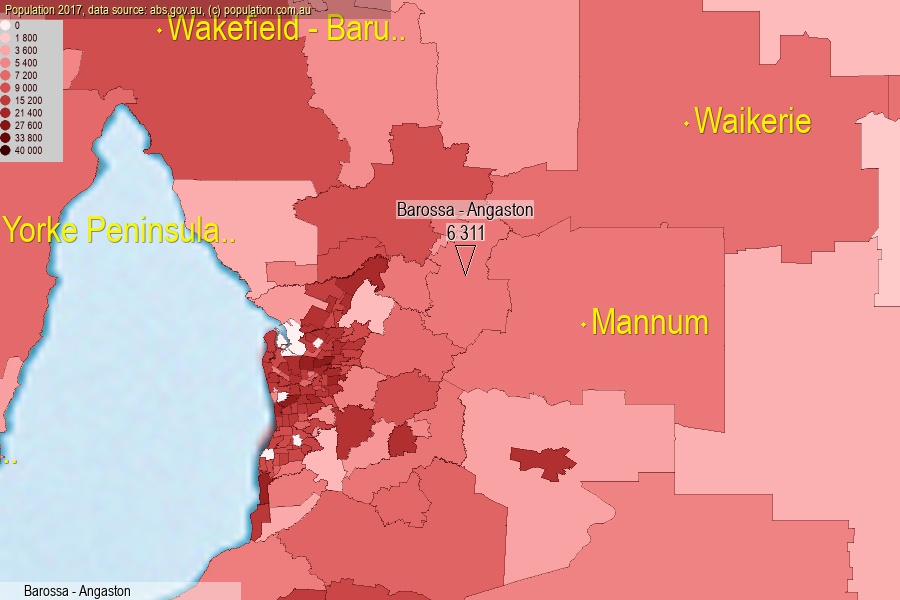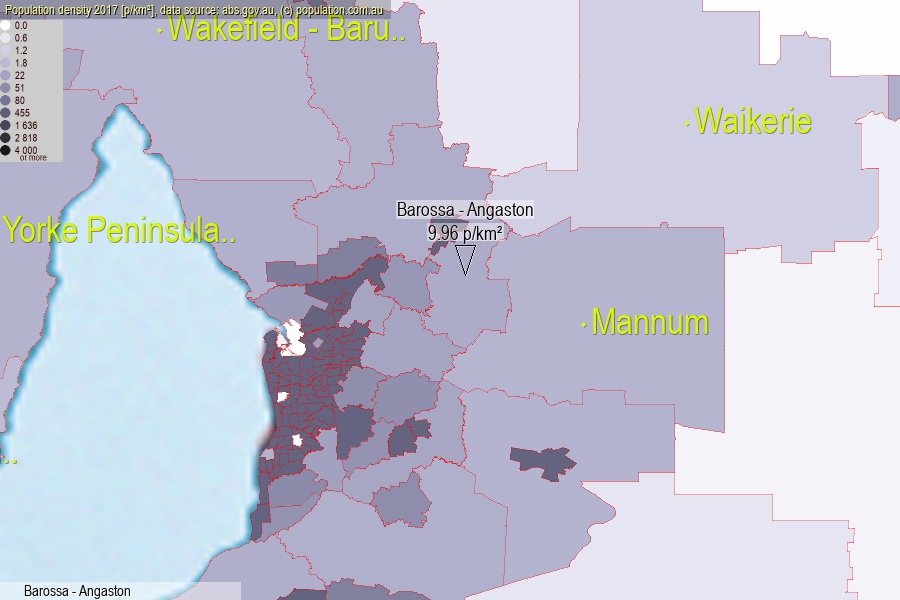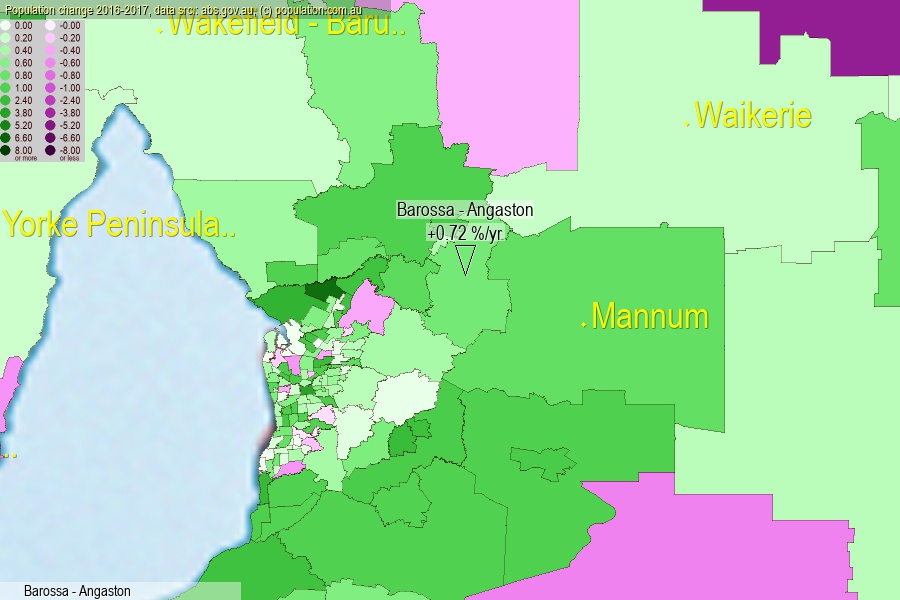 population.com.au
population.com.auLast official estimated population of Barossa - Angaston (as Statistical Area Level 2) was 6 311 people (on 2017-06-30)[2]. This was 0.03% of total Australian population and 0.364% of SA population. Area of Barossa - Angaston is 633.90 km², in this year population density was 9.96 p/km² . If population growth rate would be same as in period 2016-2017 (+0.72%/yr), Barossa - Angaston population in 2025 would be 6 683. [0]



Click to enlarge. Barossa - Angaston is located in the center of the images.
Population [people], population density [p./km²] and population change [%/year] [2]
View borders » (new window) [4]
[1991-1992] +1.78 %/Yr.
[1992-1993] -0.36 %/Yr.
[1993-1994] -0.97 %/Yr.
[1994-1995] -1.25 %/Yr.
[1995-1996] -0.26 %/Yr.
[1996-1997] +0.90 %/Yr.
[1997-1998] +0.95 %/Yr.
[1998-1999] +0.81 %/Yr.
[1999-2000] +0.84 %/Yr.
[2000-2001] +1.19 %/Yr.
[2001-2002] +0.58 %/Yr.
[2002-2003] +0.80 %/Yr.
[2003-2004] +0.71 %/Yr.
[2004-2005] +0.15 %/Yr.
[2005-2006] -1.49 %/Yr.
[2006-2007] +0.87 %/Yr.
[2007-2008] +1.83 %/Yr.
[2008-2009] +0.54 %/Yr.
[2009-2010] +0.98 %/Yr.
[2010-2011] +0.60 %/Yr.
[2011-2012] +0.53 %/Yr.
[2012-2013] +0.43 %/Yr.
[2013-2014] +0.92 %/Yr.
[2014-2015] +0.93 %/Yr.
[2015-2016] +1.08 %/Yr.
[2016-2017] +0.72 %/Yr.
[0] Calculated with linear interpolation from officially estimated population
[1] Read more about SA2 and Australian Statistical Geography Standard (ASGS) on abs.gov.au
[2] Population data from Australian Bureau of Statistics (Population and density: 2017; change: 2016-2017)
[3] Digital Boundaries: Australian Statistical Geography Standard (ASGS) 2016.
[4] Border coordinates are simplifyed using Ramer-Douglas-Peucker algorithm.